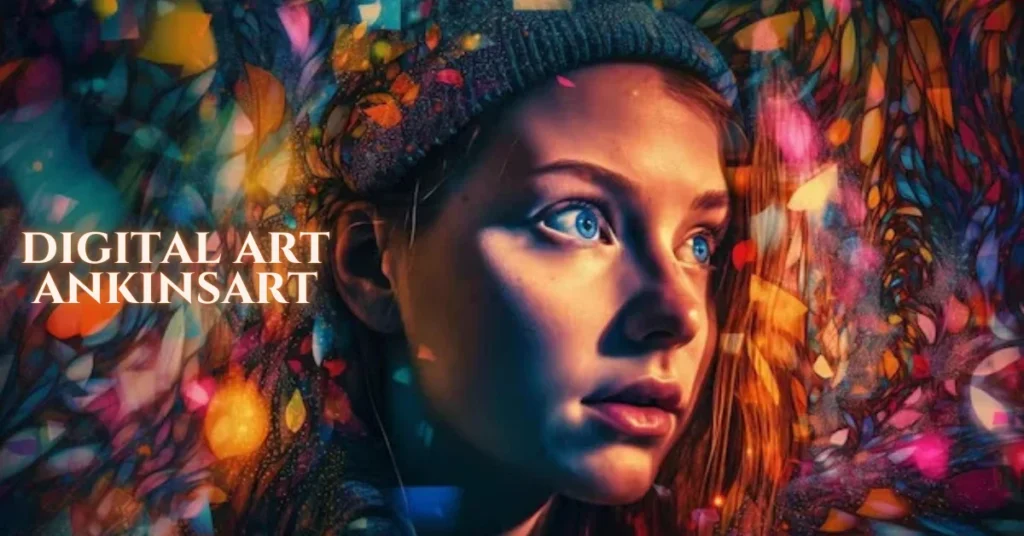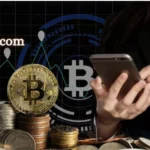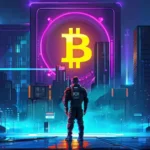Introduction
Digital art has burst onto the scene, transforming how we perceive, create, and interact with visual content. In today’s fast-paced world, traditional artistic methods are being reimagined through digital innovation. Among the many forms evolving in this space, digital art ankinsart stands out as a unique and revolutionary trend. It encapsulates a fusion of modern technology with creative expression, paving the way for artists to explore uncharted territories of imagination.
Digital art not only challenges our conventional ideas of creativity but also expands the possibilities for how we express emotions, ideas, and narratives. Whether you’re an artist, an enthusiast, or simply curious about this new era, the journey into Digital Art Ankinsart promises fascinating insights into the evolution of visual storytelling.
The Evolution of Digital Art
Historical Perspective
The roots of digital art can be traced back to the early experiments with computer graphics in the 1960s. Back then, technology was a tool primarily for scientific and military applications. However, as computers evolved, so did their role in creative pursuits. Artists began to see the computer not just as a tool for calculation, but as a canvas for their imagination.
As the digital revolution progressed, art transformed dramatically. The transition from hand-drawn illustrations to computer-generated images signaled a seismic shift. The advent of personal computers in the 1980s and the subsequent rise of graphic design software in the 1990s further democratized art creation. Suddenly, the barriers to entry were lowered, and a global community of digital artists emerged.
Technological Advancements in Art
Software Innovations
Software plays a pivotal role in digital art. Programs like Adobe Photoshop, Corel Painter, and open-source alternatives like GIMP have become staples in the artist’s toolkit. These tools allow for unparalleled manipulation of digital canvases, offering features that traditional mediums simply cannot match. Artists can experiment with layers, filters, and effects, creating works that are vibrant, layered, and dynamic.
The continuous improvements in software have also paved the way for more specialized programs that cater to niche aspects of digital art. From vector-based applications like Adobe Illustrator to animation tools like Toon Boom, the possibilities are endless. This software evolution has been a catalyst for artistic innovation, encouraging artists to push boundaries and redefine what is possible.
Hardware Developments
Advancements in hardware have been equally transformative. High-resolution monitors, powerful graphic tablets, and sophisticated stylus pens have revolutionized the way art is created and consumed. Devices such as the Wacom Cintiq series have bridged the gap between the physical and digital realms, offering artists a tactile experience that mimics traditional drawing while harnessing the power of digital technology.
Moreover, the emergence of virtual reality (VR) and augmented reality (AR) has begun to influence digital art in profound ways. These technologies allow artists to create immersive environments where viewers can experience art in a three-dimensional space, offering a level of engagement and interaction previously unimaginable.
What is Ankinsart?
Definition and Origin
Ankinsart is an emerging branch within digital art that fuses traditional art aesthetics with cutting-edge digital techniques. The term “Ankinsart” is believed to originate from a blend of names and concepts, signifying a break from the norm and a push towards innovation. It represents a movement that challenges the traditional definitions of art by integrating digital tools and creative processes in novel ways.
At its core, Ankinsart is about experimentation. It’s about blending digital brushes with a splash of creativity to produce artwork that is both visually stunning and emotionally resonant. This approach doesn’t just replicate traditional art styles—it redefines them, opening new avenues for artistic expression.
Distinctive Features of Ankinsart
Unique Style and Techniques
Ankinsart is characterized by its unique approach to style and technique. Unlike conventional digital art, which may focus heavily on realism or abstract design, Ankinsart embraces a hybrid form. Artists are encouraged to combine elements of traditional media with modern digital effects. This creates an artwork that is not only innovative but also deeply personal and reflective of the artist’s individual vision.
One of the hallmarks of Ankinsart is its willingness to break the rules. Artists often experiment with unconventional color schemes, textures, and forms. This freedom leads to creations that challenge the viewer’s expectations and offer fresh perspectives on visual storytelling.
Innovative Use of Colors and Textures
Color plays a pivotal role in Ankinsart. Digital artists have the liberty to explore color in ways that would be too costly or impractical with traditional media. Through digital manipulation, hues can be shifted, blended, and overlaid with precision. This results in works that are vivid, multi-dimensional, and capable of evoking powerful emotional responses.
Textures, too, are reimagined in this digital medium. Rather than being confined to physical surfaces, textures in Ankinsart can be layered, distorted, and animated. This opens up a world of creative possibilities, allowing artists to mimic real-life materials or invent entirely new ones that captivate the viewer’s eye.
Digital Tools and Platforms
Popular Digital Art Software
The backbone of any digital art endeavor is the software used to create it. Programs like Adobe Creative Suite, Procreate, and Clip Studio Paint have revolutionized the way art is produced. These platforms provide artists with an expansive range of tools—from customizable brushes to advanced layering techniques—that make the process of creation as limitless as the artist’s imagination.
For many, these tools have become indispensable. They not only streamline the creative process but also allow for seamless collaboration and sharing of work. Whether it’s a high-powered desktop application or a sleek app on a tablet, digital art software has democratized art creation, making it accessible to anyone with a creative spark.
Online Marketplaces and Communities
Social Media Influence
In today’s interconnected world, social media platforms have become vital spaces for digital artists to showcase their work. Platforms like Instagram, Twitter, and TikTok are teeming with vibrant communities of artists who share their creations, exchange feedback, and collaborate on projects. These digital communities foster a sense of belonging and provide artists with immediate, global exposure.
The influence of social media extends beyond mere display; it shapes trends and inspires innovation. Hashtags, challenges, and viral trends play a significant role in propelling Ankinsart into the spotlight, making it easier for artists to gain recognition and build a dedicated following.
Digital Galleries and Exhibitions
Beyond social media, the rise of digital galleries and virtual exhibitions has further expanded the reach of digital art. Online platforms now host curated exhibitions, interactive art shows, and even digital art fairs where artists can sell their work directly to collectors. These virtual spaces break geographical barriers, allowing artists from around the world to connect with audiences they might never have reached otherwise.
Digital galleries also provide a dynamic way to experience art. Unlike static physical exhibitions, virtual galleries can incorporate multimedia elements, such as animations and soundscapes, to create an immersive viewing experience that captivates the audience.
The Role of AI in Digital Art
AI-Powered Tools and Enhancements
Artificial Intelligence (AI) has begun to reshape the digital art landscape dramatically. AI-powered tools, such as neural style transfer algorithms, enable artists to apply the styles of famous painters to their digital creations with remarkable accuracy. These tools help in generating unique effects, enhancing the overall aesthetic appeal of the artwork.
AI does not replace the creative process; instead, it augments it. By handling repetitive or highly technical tasks, AI allows artists to focus on the conceptual and emotional aspects of their work. This partnership between human creativity and machine efficiency is at the heart of modern digital art, pushing the boundaries of what’s artistically possible.
Collaborations Between AI and Artists
Collaborative projects between AI and artists are increasingly becoming common. In these partnerships, AI acts as a creative assistant, offering suggestions and generating ideas that can then be refined by the artist. This symbiotic relationship is leading to groundbreaking works that challenge traditional artistic norms.
Artists are now experimenting with AI-generated content as a source of inspiration. By integrating AI’s capabilities with their personal touch, they create pieces that are both innovative and deeply personal. The resulting artwork often carries a dual narrative—one that reflects the artist’s intent and another that hints at the underlying algorithms that brought it to life.
Benefits and Challenges of Digital Art
Advantages Over Traditional Art
Digital art offers several distinct advantages over its traditional counterparts. One of the most significant benefits is its flexibility. With digital tools, an artist can experiment without the fear of irreversible mistakes. Layers, undo options, and a wide array of effects make it possible to refine and evolve a piece continuously.
Cost is another factor where digital art shines. Traditional art supplies, such as canvases, paints, and brushes, can be expensive and require significant upkeep. Digital tools, once purchased, offer endless possibilities without additional material costs. This makes art creation more accessible to a broader audience.
Moreover, digital art facilitates collaboration and sharing. An artist can easily distribute their work online, receive feedback in real time, and connect with peers globally. The ease of storage and distribution also means that artwork can be preserved without the risk of physical degradation over time.
Challenges Faced by Digital Artists
While the digital art revolution has brought many advantages, it also presents unique challenges. One primary concern is the issue of copyright and authenticity. In the digital realm, it is often easy for art to be copied, modified, or misused without the artist’s consent. This raises significant questions about intellectual property rights and how best to protect original works.
Copyright and Authenticity
Protecting digital artwork is a growing challenge. Unlike traditional art, which has physical properties that can be safeguarded, digital art is inherently more fluid and accessible. Artists often have to rely on digital watermarking, blockchain technology, or other innovative methods to assert ownership and ensure their work isn’t misappropriated.
Digital Piracy and Plagiarism
Alongside copyright issues, digital piracy and plagiarism remain significant concerns. The ease with which digital files can be shared and replicated means that artists must be vigilant. Many digital creators have expressed frustration over the unauthorized use of their work on various online platforms. This has sparked debates about how to balance the openness of the internet with the need for creative protection.
The Future of Digital Art and Ankinsart
Emerging Trends and Technologies
The future of digital art is filled with promise and excitement. Emerging trends suggest a closer integration of various technologies, including virtual reality (VR), augmented reality (AR), and AI-driven creativity. Artists are now exploring immersive experiences that allow viewers to interact with art in ways that were previously confined to science fiction.
One trend that is particularly exciting is the convergence of physical and digital art. With the rise of hybrid exhibitions and digital installations in public spaces, art is no longer confined to galleries or screens. Instead, it permeates our daily environments, transforming public spaces into canvases for creativity.
Predictions for the Next Decade
Looking ahead, the next decade is likely to witness even greater innovation in digital art. The continuous improvement of digital tools, coupled with advancements in AI and VR/AR technologies, will open up new creative frontiers. We may see more collaborative projects that blend multiple art forms, creating multisensory experiences that challenge our understanding of what art can be.
As technology evolves, the lines between the digital and physical worlds will continue to blur. Digital art, including movements like Ankinsart, will likely play a central role in this transformation, offering endless possibilities for visual expression and creative experimentation.
Conclusion
Digital Art Ankinsart represents a bold new era in the world of visual expression. It combines the best aspects of traditional art with innovative digital techniques, creating a space where creativity knows no bounds. From its historical roots to the futuristic integration of AI and immersive technologies, Ankinsart challenges us to rethink the possibilities of artistic expression. Whether you are an artist, a collector, or simply an admirer of beauty, this revolutionary form of art invites you to explore a vibrant new universe where every pixel tells a story and every creation is a journey into the future of art.
As digital tools continue to evolve and the artistic community embraces new technologies, the landscape of digital art will expand, offering endless opportunities for creativity and connection. The fusion of technology and art in Ankinsart not only democratizes the creative process but also fosters a global dialogue on the nature of art in the 21st century. Embrace this new era with an open mind and a willingness to explore, and you may find that the digital canvas holds more wonder and inspiration than ever before.
ALSO READ: Queen Complex: The Truth Behind the Crown
FAQs
What exactly is Ankinsart?
Ankinsart is a cutting-edge form of digital art that fuses traditional art aesthetics with modern digital techniques, enabling artists to explore new styles and methods of visual expression.
How does digital art differ from traditional art?
Digital art utilizes modern technology—such as specialized software, high-resolution devices, and AI—to create and manipulate artwork, offering greater flexibility, ease of editing, and innovative techniques that traditional mediums cannot replicate.
What role does AI play in the creation of Ankinsart?
AI assists artists by automating repetitive tasks, suggesting creative enhancements, and even collaborating on generating ideas. This partnership enables artists to focus on the creative process and experiment with new forms and styles.
Can digital art be protected against piracy and plagiarism?
While digital art faces challenges related to unauthorized copying, artists are increasingly adopting digital watermarking, blockchain verification, and other technologies to protect their work and assert copyright.
What does the future hold for digital art and movements like Ankinsart?
The future is promising, with ongoing advancements in digital tools, AI, and immersive technologies such as VR and AR. These innovations are set to expand the creative landscape, making digital art more interactive, collaborative, and accessible than ever before.






